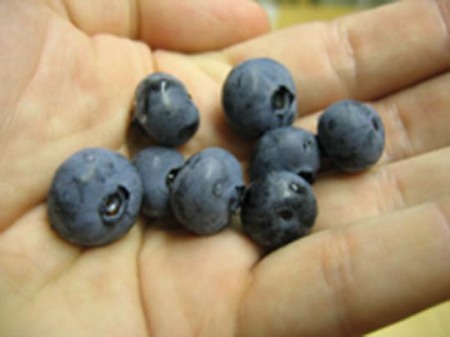We spent last week on a lovely vacation in Lake Placid, in the Adirondacks. I did my homework ahead of time, and found farmers market listings for New York State.
We brought a large cooler with us that contained, among other things, the corn salad and what was left of the Costa Rican slaw that I made in Week 11, along with chicory, lettuce, cucumbers, radishes, carrots, red cabbage, green bell pepper, potatoes, and two tiny yellow squash, all left over from the previous week (or even earlier). We ate some of the salads for lunch on the Lake Champlain ferry.
Our first night in Lake Placid, my mother-in-law made the chicory, mushroom, and roasted pepper pasta dish from Greens, Glorious Greens and it was colorful and delicious. (Yes, we brought the cook book with us. If you’re looking for it, look under escarole, not chicory.) While she cooked that, I made a colorful if odd salad of lettuce, radishes, yellow squash, green pepper, the largest cucumber, and some knife-shredded red cabbage leaves. It was a lot of food, even for four adults.
We went to the Keene Farmers Market on Sunday. The highlight was a local dog-and-owner square dance troupe. The dog and its owner were a couple, and the dogs had to be very, very good at accepting “stay” commands from each of the owners in the square, while lots of other interesting activity was going on, both human and canine.
We were at the market with my in-laws, who were with us for the entire weekend. Between all of us, we bought a dozen ears of corn, two zuchini and two yellow squash large enough to make burger-size slices to grill without falling through the slats, one incredible tomato, one bunch of beautiful rainbow chard, two pints of raspberries, a quart of mixed plums and Saturn peaches, and a dozen free-range eggs.
Everything about a free-range egg is sturdier than in a conventional store-bought egg – the shell is harder, the yolk is brighter and stands taller in the pan, even the whites are better, although I can’t describe how. It was $3 for the dozen and worth every penny!
We hadn’t intended to buy peaches, because we get those around home (Boston area) often enough. Plums were more interesting, and we couldn’t decide between the two varieties being sold. When we asked for a mixed quart, the farmer looked around for an empty quart container to fill for us. Not finding one, he picked up one that already had peaches in it. Instead of completely emptying it out before putting in plums, he left some peaches explaining that they’re very sought-after, costing half again as much closer to New York City. (He lives much closer to New York City than to Lake Placid, but comes up to the Adirondacks to fish, and pays for gas by selling at the farmers market.) They’re strange looking fruit, because the flesh makes a doughnut around the pit, with dimples on the top and bottom where the pit is shorter than the fruit. They were, in fact, tasty, but we liked the plums better.
We grilled the squash and zucchini, and ate leftovers all week. Leftover corn we cut off the cob and diluted the overly spicy corn salad that I’d made the week before. Leftover wine and mushrooms inspired a yummy chard side dish: we cooked the mushrooms in some olive oil until they started to release juices, then added minced garlic, then red wine. It all cooked together for a bit while the rest of supper heated. When everything else was nearly ready, coarsely chopped chard went in, and was pushed around until it all wilted. The mushrooms were purple from simmering in wine so long, but the colors of the chard stems still showed through.
We visited the Cornell Maple Research Station where we learned about the many ways they’ve found to increase yield and reduce energy needed. We bought a half gallon of dark (grade B) maple syrup while we were there.
We had picked 8 blackberries before going away. When we got home again, we harvested a relatively-whopping 19 blackberries. More had ripened and then gone past during the week, so we left those for the birds.
